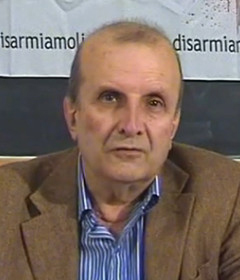Europe is a war-game ground for the US / NATO strategy
by Manlio Dinucci, Italy

(picture ma)
In 2020, peoples’ land mobility in the European Union was paralysed by lockdowns, mainly following the tourism blockade. The same happened in air mobility: according to a study by the European Parliament (March 2021), it suffered a net loss of 56 billion Euros and 191,000 direct jobs, plus over a million in related industries. In 2021, the recovery is promising to be very problematic. Only one sector has greatly increased its mobility against the ongoing-trend: the military sector.
At the moment, about 28,000 soldiers are passing from one country to another in Europe with tanks and airplanes: they are engaged in Defender-Europe 21, the US Army (not NATO) great exercise in Europe involving 25 European Allies and Partners. Italy participates in it not only with its armed forces but as a host country. At the same time, the NATO Steadfast Defender exercise is about to begin, mobilising over 9,000 US and European soldiers, including Italian soldiers. It constitutes the first large-scale test of the two new NATO commands: The Joint Force Command, with its headquarters in Norfolk (USA), and the Joint Support Command with its headquarters in Ulm (Germany). The “mission” of the Norfolk Command is “to protect the Atlantic routes between North America and Europe”, which according to NATO would be threatened by Russian submarines; the “mission” of the Ulm Command is “to ensure troops mobility across the European borders to allow a rapid strengthening of the Alliance on the Eastern front”, which would be threatened by Russian forces according to NATO.
For this second “mission” the European Union plays an important role, as the US Army requested the establishment of “a military Schengen Area”. The Action Plan on military mobility, presented by the European Commission in 2018, envisaged modifying “infrastructures (bridges, railways, and roads) that are not suitable for the weight or size of heavy military vehicles”. For example, if a bridge cannot carry the weight of a 70-ton tank column, it must be strengthened or rebuilt. After having earmarked an initial allocation of around 2 billion euros for this purpose, public money subtracted from social expenses, the EU Ministers of Defense (Lorenzo Guerini for Italy) decided on May 8 to involve the United States, Canada, and Norway on the EU military mobility plan. NATO Secretary-General Stoltenberg, who was present at the meeting, stressed that “Non-EU Allies play an essential role in protecting and defending Europe”. In this way, NATO (21 over 27 EU countries are NATO members), after having instructed the EU to carry out and pay for the restructuring of European infrastructures for military purposes, actually takes over the management of the “Military Schengen Area”.
In the European region transformed in a parade ground, the infrastructure adaptation to the US / NATO forces mobility is tested in war trials, which include “the deployment of land and naval forces from North America to the Black Sea region”. They serve – quoting Stoltenberg’s words – to “demonstrate that NATO has the ability and the will to protect all allies from any threat”. The kind of “threat” was also declared by the G7 Foreign Ministers (United States, Canada, Great Britain, Germany, France, Italy, and Japan), who met on 5 May in London. The seven Ministers (Luigi Di Maio for Italy), overturning the facts accused Russia of “irresponsible and destabilising behaviour, illegal annexation of Crimea, massing military forces on the Ukraine border, use of chemical weapons to poison opponents, malicious activities to undermine the democratic system of other countries, threaten the rules-based international order”. The fact that the G7 formulated these accusations with the same words used by the Pentagon and repeated by NATO, confirms the existence of the same matrix in the strategy of tension that pushes Europe into an increasingly dangerous situation.•
Source: il manifesto of 11 May 2021
(Translation Jeannie Toschi Marazzani Visconti, CNGNN, Italy)